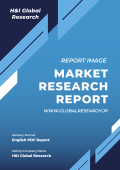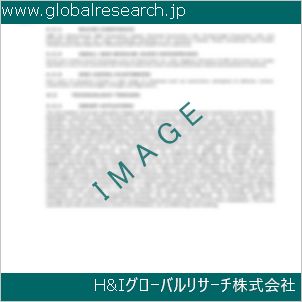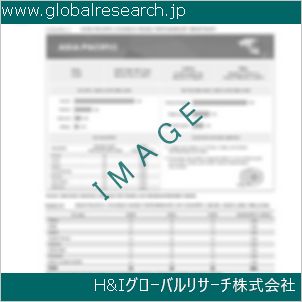1.Research Methodology
1.1.Desk Research
1.2.Real time insights and validation
1.3.Forecast model
1.4.Assumptions and forecast parameters
1.5.Market size estimation
1.5.1.Top-down approach
1.5.2.Bottom-up approach
2.Report Scope
2.1.Market definition
2.2.Key objectives of the study
2.3.Report overview
2.4.Market segmentation
2.5.Overview of the impact of COVID-19 on global antinuclear antibody test market
3.Executive Summary
4.Market Overview
4.1.Introduction
4.2.Growth impact forces
4.2.1.Drivers
4.2.2.Restraints
4.2.3.Opportunities
4.3.Market value chain analysis
4.3.1.List of raw material suppliers
4.3.2.List of manufacturers
4.3.3.List of distributors
4.4.Innovation & sustainability matrices
4.4.1.Technology matrix
4.4.2.Regulatory matrix
4.5.Porter’s five forces analysis
4.5.1.Bargaining power of suppliers
4.5.2.Bargaining power of consumers
4.5.3.Threat of substitutes
4.5.4.Threat of new entrants
4.5.5.Competitive rivalry intensity
4.6.PESTLE analysis
4.6.1.Political
4.6.2.Economical
4.6.3.Social
4.6.4.Technological
4.6.5.Environmental
4.7.Impact of COVID-19 on antinuclear antibody test market
4.7.1.Pre-COVID market scenario
4.7.2.Post-COVID market scenario
5.Antinuclear Antibody Test Market Analysis, by Product
5.1.Overview
5.2.Reagents & Assay Kits
5.2.1.Definition, key trends, growth factors, and opportunities
5.2.2.Market size analysis, by region, 2021-2031
5.2.3.Market share analysis, by country, 2021-2031
5.3.Systems
5.3.1.Definition, key trends, growth factors, and opportunities
5.3.2.Market size analysis, by region, 2021-2031
5.3.3.Market share analysis, by country, 2021-2031
5.4.Software & Services
5.4.1.Definition, key trends, growth factors, and opportunities
5.4.2.Market size analysis, by region, 2021-2031
5.4.3.Market share analysis, by country, 2021-2031
5.5.Research Dive Exclusive Insights
5.5.1.Market attractiveness
5.5.2.Competition heatmap
6.Antinuclear Antibody Test Market Analysis, by Technique
6.1.ELISA
6.1.1.Definition, key trends, growth factors, and opportunities
6.1.2.Market size analysis, by region, 2021-2031
6.1.3.Market share analysis, by country, 2021-2031
6.2.Immunofluorescence Assay
6.2.1.Definition, key trends, growth factors, and opportunities
6.2.2.Market size analysis, by region, 2021-2031
6.2.3.Market share analysis, by country, 2021-2031
6.3.Multiplex Assay
6.3.1.Definition, key trends, growth factors, and opportunities
6.3.2.Market size analysis, by region, 2021-2031
6.3.3.Market share analysis, by country, 2021-2031
6.4.Research Dive Exclusive Insights
6.4.1.Market attractiveness
6.4.2.Competition heatmap
7.Antinuclear Antibody Test Market Analysis, by Application
7.1.Rheumatoid Arthritis
7.1.1.Definition, key trends, growth factors, and opportunities
7.1.2.Market size analysis, by region, 2021-2031
7.1.3.Market share analysis, by country, 2021-2031
7.2.Systemic Lupus Erythematosus
7.2.1.Definition, key trends, growth factors, and opportunities
7.2.2.Market size analysis, by region, 2021-2031
7.2.3.Market share analysis, by country, 2021-2031
7.3.Sjogren’s Syndrome
7.3.1.Definition, key trends, growth factors, and opportunities
7.3.2.Market size analysis, by region, 2021-2031
7.3.3.Market share analysis, by country, 2021-2031
7.4.Scleroderma
7.4.1.Definition, key trends, growth factors, and opportunities
7.4.2.Market size analysis, by region, 2021-2031
7.4.3.Market share analysis, by country, 2021-2031
7.5.Others
7.5.1.Definition, key trends, growth factors, and opportunities
7.5.2.Market size analysis, by region, 2021-2031
7.5.3.Market share analysis, by country, 2021-2031
7.6.Research Dive Exclusive Insights
7.6.1.Market attractiveness
7.6.2.Competition heatmap
8.Antinuclear Antibody Test Market Analysis, by End-use
8.1.Hospitals
8.1.1.Definition, key trends, growth factors, and opportunities
8.1.2.Market size analysis, by region, 2021-2031
8.1.3.Market share analysis, by country, 2021-2031
8.2. Clinical Laboratories
8.2.1.Definition, key trends, growth factors, and opportunities
8.2.2.Market size analysis, by region, 2021-2031
8.2.3.Market share analysis, by country, 2021-2031
8.3.Physician Office Laboratories
8.3.1.Definition, key trends, growth factors, and opportunities
8.3.2.Market size analysis, by region, 2021-2031
8.3.3.Market share analysis, by country, 2021-2031
8.4.Others
8.4.1.Definition, key trends, growth factors, and opportunities
8.4.2.Market size analysis, by region, 2021-2031
8.4.3.Market share analysis, by country, 2021-2031
8.5.Research Dive Exclusive Insights
8.5.1.Market attractiveness
8.5.2.Competition heatmap
9.Antinuclear Antibody Test Market, by Region
9.1.North America
9.1.1.U.S.
9.1.1.1.Market size analysis, by Product, 2021-2031
9.1.1.2.Market size analysis, by Technique, 2021-2031
9.1.1.3.Market size analysis, by Application, 2021-2031
9.1.1.4.Market size analysis, by End-use, 2021-2031
9.1.2.Canada
9.1.2.1.Market size analysis, by Product, 2021-2031
9.1.2.2.Market size analysis, by Technique, 2021-2031
9.1.2.3.Market size analysis, by Application, 2021-2031
9.1.2.4.Market size analysis, by End-use, 2021-2031
9.1.3.Mexico
9.1.3.1.Market size analysis, by Product, 2021-2031
9.1.3.2.Market size analysis, by Technique, 2021-2031
9.1.3.3.Market size analysis, by Application, 2021-2031
9.1.3.4.Market size analysis, by End-use, 2021-2031
9.1.4.Research Dive Exclusive Insights
9.1.4.1.Market attractiveness
9.1.4.2.Competition heatmap
9.2.Europe
9.2.1.Germany
9.2.1.1.Market size analysis, by Product, 2021-2031
9.2.1.2.Market size analysis, by Technique, 2021-2031
9.2.1.3.Market size analysis, by Application, 2021-2031
9.2.1.4.Market size analysis, by End-use, 2021-2031
9.2.2.UK
9.2.2.1.Market size analysis, by Product, 2021-2031
9.2.2.2.Market size analysis, by Technique, 2021-2031
9.2.2.3.Market size analysis, by Application, 2021-2031
9.2.2.4.Market size analysis, by End-use, 2021-2031
9.2.3.France
9.2.3.1.Market size analysis, by Product, 2021-2031
9.2.3.2.Market size analysis, by Technique, 2021-2031
9.2.3.3.Market size analysis, by Application, 2021-2031
9.2.3.4.Market size analysis, by End-use, 2021-2031
9.2.4.Spain
9.2.4.1.Market size analysis, by Product, 2021-2031
9.2.4.2.Market size analysis, by Technique, 2021-2031
9.2.4.3.Market size analysis, by Application, 2021-2031
9.2.4.4.Market size analysis, by End-use, 2021-2031
9.2.5.Italy
9.2.5.1.Market size analysis, by Product, 2021-2031
9.2.5.2.Market size analysis, by Technique, 2021-2031
9.2.5.3.Market size analysis, by Application, 2021-2031
9.2.5.4.Market size analysis, by End-use, 2021-2031
9.2.6.Rest of Europe
9.2.6.1.Market size analysis, by Product, 2021-2031
9.2.6.2.Market size analysis, by Technique, 2021-2031
9.2.6.3.Market size analysis, by Application, 2021-2031
9.2.6.4.Market size analysis, by End-use, 2021-2031
9.2.7.Research Dive Exclusive Insights
9.2.7.1.Market attractiveness
9.2.7.2.Competition heatmap
9.3.Asia-Pacific
9.3.1.China
9.3.1.1.Market size analysis, by Product, 2021-2031
9.3.1.2.Market size analysis, by Technique, 2021-2031
9.3.1.3.Market size analysis, by Application, 2021-2031
9.3.1.4.Market size analysis, by End-use, 2021-2031
9.3.2.Japan
9.3.2.1.Market size analysis, by Product, 2021-2031
9.3.2.2.Market size analysis, by Technique, 2021-2031
9.3.2.3.Market size analysis, by Application, 2021-2031
9.3.2.4.Market size analysis, by End-use, 2021-2031
9.3.3.India
9.3.3.1.Market size analysis, by Product, 2021-2031
9.3.3.2.Market size analysis, by Technique, 2021-2031
9.3.3.3.Market size analysis, by Application, 2021-2031
9.3.3.4.Market size analysis, by End-use, 2021-2031
9.3.4.Australia
9.3.4.1.Market size analysis, by Product, 2021-2031
9.3.4.2.Market size analysis, by Technique, 2021-2031
9.3.4.3.Market size analysis, by Application, 2021-2031
9.3.4.4.Market size analysis, by End-use, 2021-2031
9.3.5.South Korea
9.3.5.1.Market size analysis, by Product, 2021-2031
9.3.5.2.Market size analysis, by Technique, 2021-2031
9.3.5.3.Market size analysis, by Application, 2021-2031
9.3.5.4.Market size analysis, by End-use, 2021-2031
9.3.6.Rest of Asia-Pacific
9.3.6.1.Market size analysis, by Product, 2021-2031
9.3.6.2.Market size analysis, by Technique, 2021-2031
9.3.6.3.Market size analysis, by Application, 2021-2031
9.3.6.4.Market size analysis, by End-use, 2021-2031
9.3.7.Research Dive Exclusive Insights
9.3.7.1.Market attractiveness
9.3.7.2.Competition heatmap
9.4.LAMEA
9.4.1.Brazil
9.4.1.1.Market size analysis, by Product, 2021-2031
9.4.1.2.Market size analysis, by Technique, 2021-2031
9.4.1.3.Market size analysis, by Application, 2021-2031
9.4.1.4.Market size analysis, by End-use, 2021-2031
9.4.2.Saudi Arabia
9.4.2.1.Market size analysis, by Product, 2021-2031
9.4.2.2.Market size analysis, by Technique, 2021-2031
9.4.2.3.Market size analysis, by Application, 2021-2031
9.4.2.4.Market size analysis, by End-use, 2021-2031
9.4.3.UAE
9.4.3.1.Market size analysis, by Product, 2021-2031
9.4.3.2.Market size analysis, by Technique, 2021-2031
9.4.3.3.Market size analysis, by Application, 2021-2031
9.4.3.4.Market size analysis, by End-use, 2021-2031
9.4.4.South Africa
9.4.4.1.Market size analysis, by Product, 2021-2031
9.4.4.2.Market size analysis, by Technique, 2021-2031
9.4.4.3.Market size analysis, by Application, 2021-2031
9.4.4.4.Market size analysis, by End-use, 2021-2031
9.4.5.Rest of LAMEA
9.4.5.1.Market size analysis, by Product, 2021-2031
9.4.5.2.Market size analysis, by Technique, 2021-2031
9.4.5.3.Market size analysis, by Application, 2021-2031
9.4.5.4.Market size analysis, by End-use, 2021-2031
9.4.6.Research Dive Exclusive Insights
9.4.6.1.Market attractiveness
9.4.6.2.Competition heatmap
10.Competitive Landscape
10.1.Top winning strategies, 2021
10.1.1.By strategy
10.1.2.By year
10.2.Strategic overview
10.3.Market share analysis, 2021
11.Company Profiles
11.1.Erba Diagnostics
11.1.1.Overview
11.1.2.Business segments
11.1.3.Product portfolio
11.1.4.Financial performance
11.1.5.Recent developments
11.1.6.SWOT analysis
11.2.Bio-Rad Laboratories, Inc.
11.2.1.Overview
11.2.2.Business segments
11.2.3.Product portfolio
11.2.4.Financial performance
11.2.5.Recent developments
11.2.6.SWOT analysis
11.3.Trinity Biotech Plc.
11.3.1.Overview
11.3.2.Business segments
11.3.3.Product portfolio
11.3.4.Financial performance
11.3.5.Recent developments
11.3.6.SWOT analysis
11.4.Thermo Fisher Scientific
11.4.1.Overview
11.4.2.Business segments
11.4.3.Product portfolio
11.4.4.Financial performance
11.4.5.Recent developments
11.4.6.SWOT analysis
11.5.Antibodies Incorporated
11.5.1.Overview
11.5.2.Business segments
11.5.3.Product portfolio
11.5.4.Financial performance
11.5.5.Recent developments
11.5.6.SWOT analysis
11.6.EUROIMMUN Medizinische Labordiagnostika AG
11.6.1.Overview
11.6.2.Business segments
11.6.3.Product portfolio
11.6.4.Financial performance
11.6.5.Recent developments
11.6.6.SWOT analysis
11.7.Immuno Concepts NA Ltd.
11.7.1.Overview
11.7.2.Business segments
11.7.3.Product portfolio
11.7.4.Financial performance
11.7.5.Recent developments
11.7.6.SWOT analysis
11.8.Inova Diagnostics, Inc.
11.8.1.Overview
11.8.2.Business segments
11.8.3.Product portfolio
11.8.4.Financial performance
11.8.5.Recent developments
11.8.6.SWOT analysis
11.9.ZEUS Scientific, Inc.
11.9.1.Overview
11.9.2.Business segments
11.9.3.Product portfolio
11.9.4.Financial performance
11.9.5.Recent developments
11.9.6.SWOT analysis
11.10.Alere Inc.
11.10.1.Overview
11.10.2.Business segments
11.10.3.Product portfolio
11.10.4.Financial performance
11.10.5.Recent developments
11.10.6.SWOT analysis
12.Appendix
12.1.Parent & peer market analysis
12.2.Premium insights from industry experts
12.3.Related reports”
❖ 免責事項 ❖
http://www.globalresearch.jp/disclaimer












